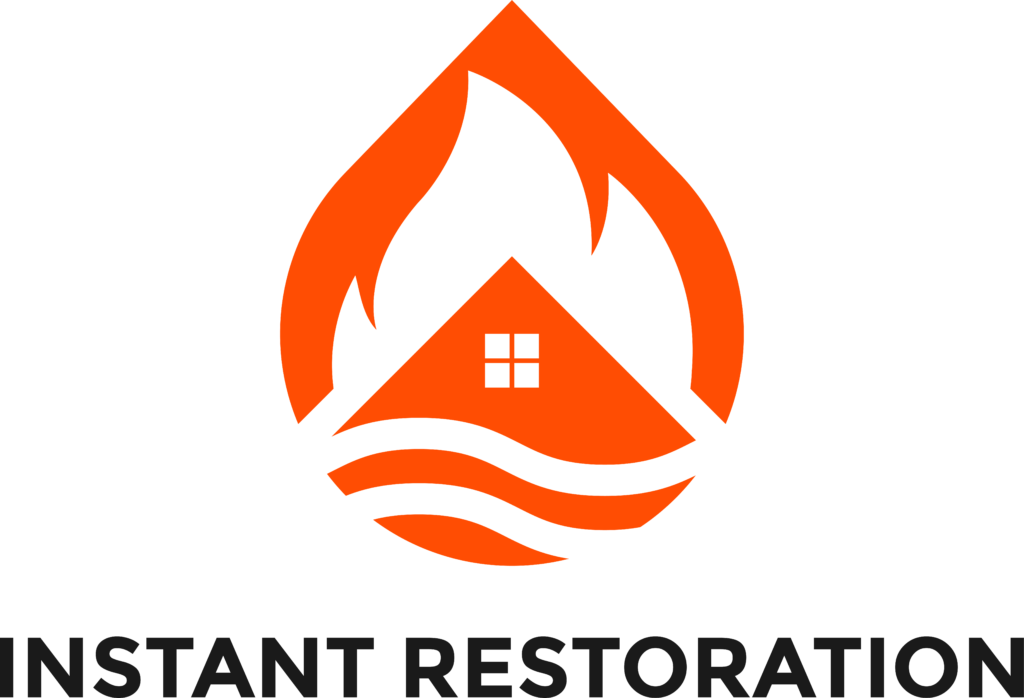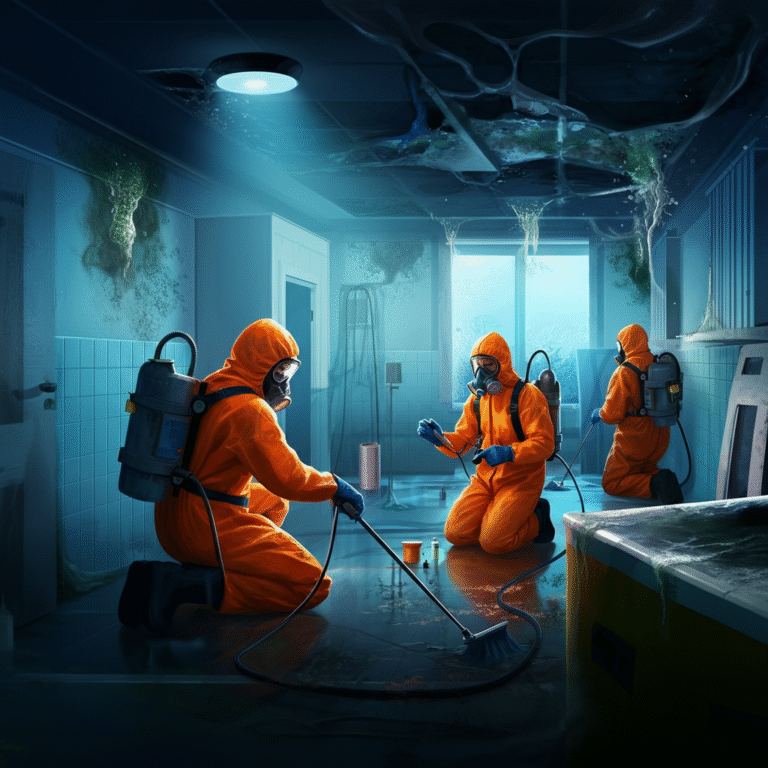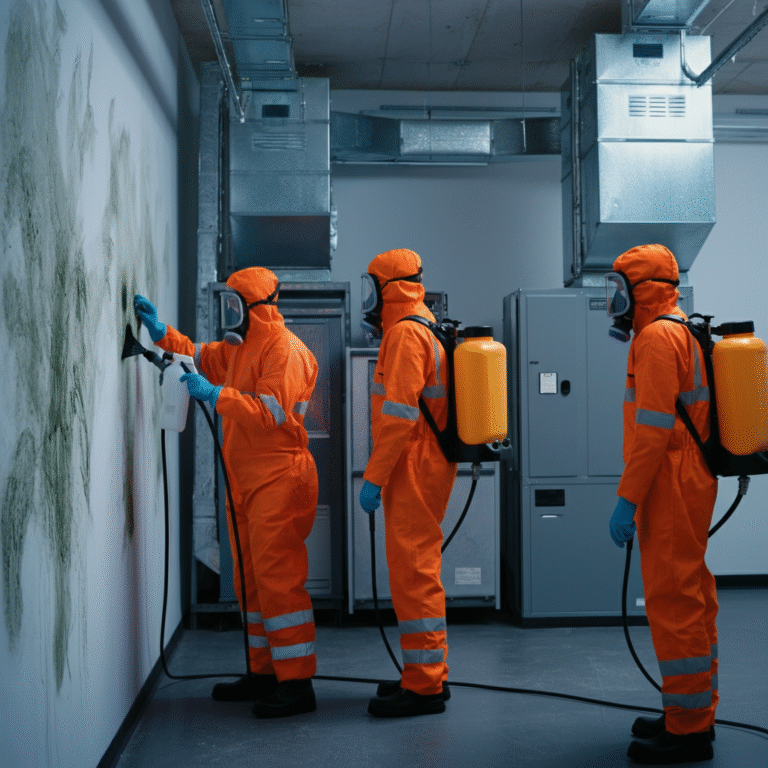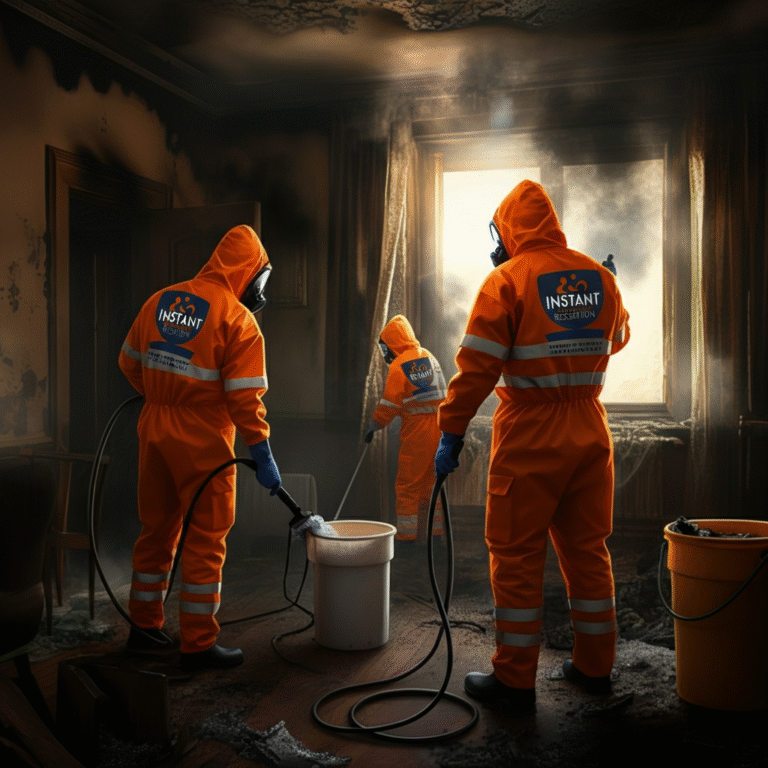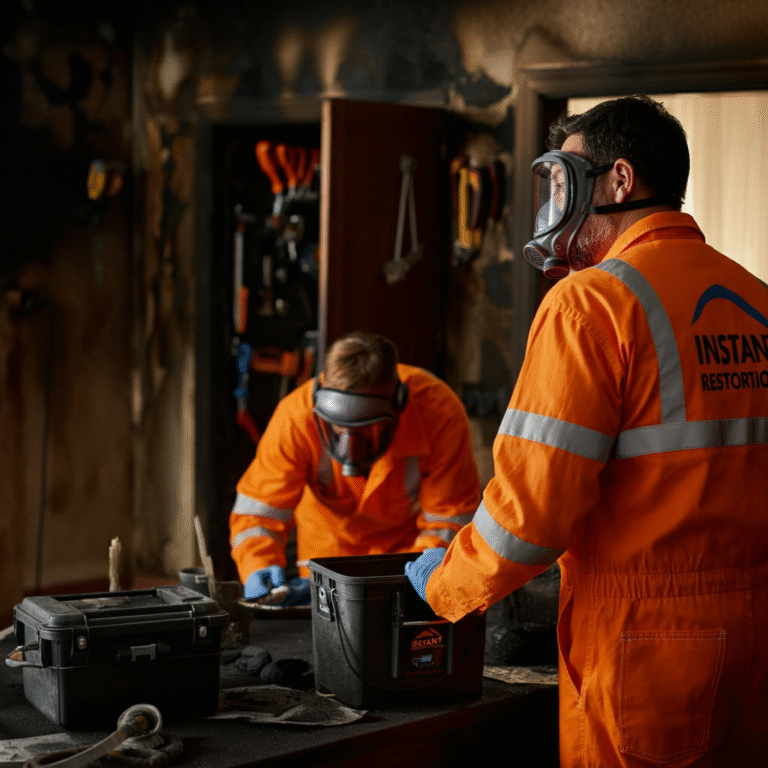Mold Remediation: Addressing Mold Risks in Commercial Buildings Mold doesn’t just pose a threat to homes—it’s a silent disruptor in commercial and industrial buildings.
Mold remediation, addressing mold risks in commercial buildings, is essential because while mold can compromise the safety and comfort of a home, its impact on a business can mean lost revenue, operational downtime, and greater liability. From high-moisture environments to poor ventilation systems, mold infestations in these structures can result in serious health liabilities, structural degradation, and regulatory violations.
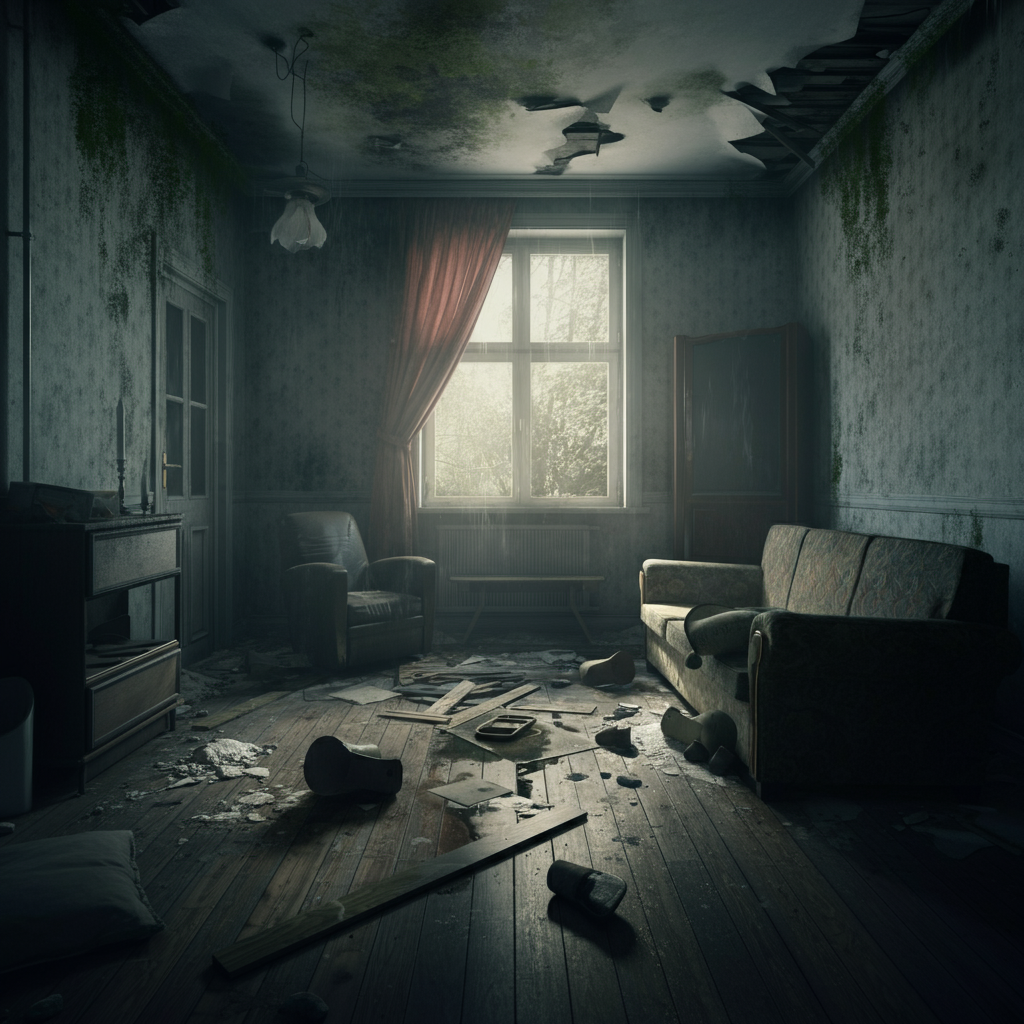
At Instant Restoration, we specialize in full-scale Commercial Mold Remediation that keeps your operation compliant, your occupants safe, and your building protected.
Why Commercial Mold Is More Dangerous Than You Think
Mold Remediation: Addressing Mold Risks in Commercial Buildings In a commercial or industrial environment, mold spreads faster, impacts more people, and often goes unnoticed for longer periods. Factors like HVAC systems, suspended ceilings, and hidden utility corridors allow mold to thrive without immediate detection.
Here’s what’s at stake:
- Compromised indoor air quality
- Sick building syndrome complaints
- Regulatory fines from OSHA or local health departments
- Downtime or evacuation of the facility
- Lost rental income or commercial lease disputes
This is why companies trust a Mold removal Company like ours for urgent, certified intervention.
Where Mold Typically Hides in Commercial Facilities
- Inside HVAC ductwork and return air shafts
- Behind drywall and around windows
- Under carpeting or raised flooring
- In damp basements, boiler rooms, or crawlspaces
- Around rooflines, skylights, or damaged flashing
- On and under floors affected by water damage—prompt monitoring and drying are essential to prevent warped or damaged flooring.
- On furniture, including upholstery and wood surfaces, which can be especially vulnerable to mold and water damage in commercial spaces.
Every building is different, so we start with full Mold Inspection and Mold testing using industry-grade equipment. Our team evaluates every inch of your facility for active growth, moisture sources, and air quality impact.
Industries at High Risk for Mold Contamination
- Warehouses and logistics centers
- Office buildings with suspended ceilings
- Retail spaces with poor drainage or roof leaks
- Restaurants and food-processing facilities
- Medical centers and long-term care buildings
- Schools and child care centers
- Industrial manufacturing plants with cooling systems
If your building falls into any of these categories, we recommend proactive Commercial Mold Removal before visible signs appear.
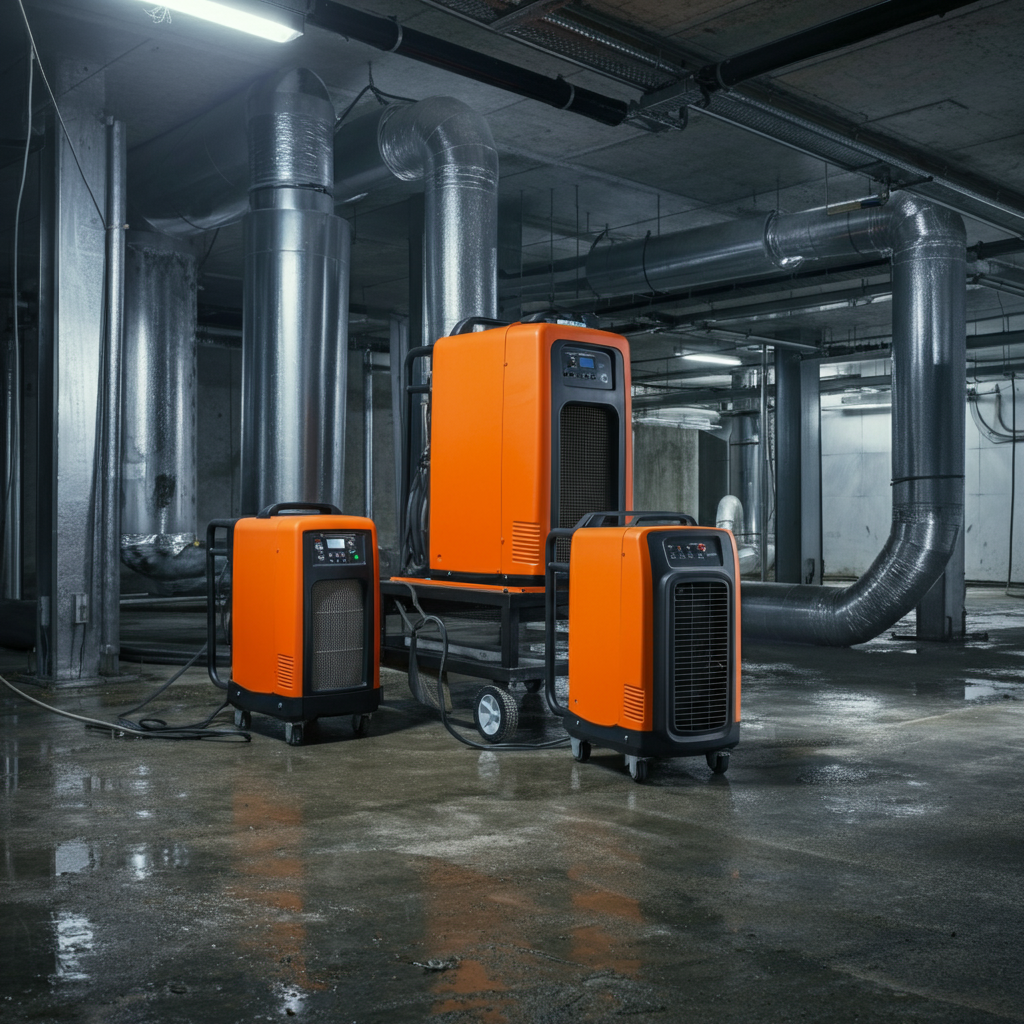
What Causes Commercial Mold Outbreaks?
Water IntrusionLeaking roofs, burst pipes, or poor drainage systems cause moisture build-up. We address this with our Commercial Water Damage Restoration Company services that eliminate water sources before mold remediation begins.
High HumidityPoor ventilation in storage spaces or mechanical rooms often leads to high ambient humidity—perfect for mold.
Flood Damage or Fire SuppressionWhen flooding or sprinklers soak walls and flooring, it only takes 24–48 hours for mold to form. Our team handles Commercial Emergency Flood damage Restoration and water mitigation first, then transitions to mold abatement.
Sewage BackupA sewage spill doesn’t just create biohazards—it invites mold. We provide full Suage cleanup, Commerical Suage cleanup, and sanitization as part of our integrated approach.
Hurricane DamageSevere weather events like hurricanes can cause significant water intrusion, leading to widespread mold outbreaks that require professional remediation.
Our Commercial Mold Remediation Process
- Inspection & TestingWe identify affected areas using moisture meters, infrared scanners, and spore traps. Every mold issue is unique, so we tailor every plan. We thoroughly assess the extent and severity of both water and mold damage to determine the best course of action.
- ContainmentNegative pressure systems and physical barriers stop cross-contamination. Our Mold abatement company ensures safety and isolation of the site. We also control access to affected areas to protect occupants and workers from potential hazards.
- HEPA Filtration and RemovalWe remove mold from surfaces and the air using commercial-grade HEPA filters and scrubbers. We also extract porous materials that can’t be saved. All irreparably damaged materials are properly removed to prevent further contamination.
- Dry Out & DisinfectionPaired with our Commercial Water Damage Removal and Dry Out services, we dehumidify the environment and apply EPA-approved antimicrobials. During this phase, we open doors to improve airflow and speed up drying and cleaning.
- Clearance TestingBefore reopening, we conduct third-party clearance testing to confirm a safe environment. We continue to monitor for any signs of mold regrowth or lingering moisture after remediation is complete.
Is Mold Remediation Covered by Insurance?
Yes—and we help make sure it’s approved. We coordinate with your carrier to ensure:
- Claim documentation includes Mold testing and loss origin
- Scope of work aligns with how is mold remediation done per IICRC S520 standards
- Line items reflect labor, containment, demolition, and drying
- Explanations answer is mold remediation covered by insurance, when is mold remediation required, and who pays for mold remediation
We work directly with your insurance company to assist with claims and streamline the approval process. It’s important to begin the claims process as soon as possible after discovering damage. Contact your restoration provider immediately to minimize further damage and ensure a prompt response.
We’re not just a Mold remediation company—we’re a restoration partner who understands policy language and approval pathways.
How Long Does Mold Remediation Take?
Mold Remediation: Addressing Mold Risks in Commercial Buildings For commercial buildings, remediation projects vary. A small office suite might take 1–3 days. A multi-floor warehouse or hospital wing may take 1–3 weeks depending on:
- Total square footage
- Number of affected zones
- HVAC or confined space involvement
- Required documentation or third-party oversight
Our team works nights, weekends, or staggered shifts if needed to avoid disrupting your operations.
Case Example: Mold in a Thousand Oaks Data Center
A roof leak went unnoticed above a cooled server room. Within days, mold spores were detected by IT staff. We performed:
- Emergency containment
- Server-safe negative air machines
- Mold removal from insulation and drywall
- Water Damage Extraction
- Commercial Mold Abatement in adjacent offices
- Full property damage restoration in compliance with lease terms
Our team assisted the client throughout the insurance and restoration process, ensuring a smooth recovery and minimal disruption.
Uptime was preserved. Liability was avoided. Insurance covered all costs.
Why Choose Instant Restoration?
We serve Los Angeles County, Ventura County, and surrounding areas with 24/7 service and same-day inspection.
What sets us apart:
- Certified Mold restoration company and IICRC firm
- OSHA-compliant procedures for commercial and industrial settings
- Licensed general contractor for structural repair and sheetrock water damage repair
- Preferred vendor for multiple carriers
- Full service: Flood cleanup company, Fire damage restoration, and smoke damage restoration experts
We don’t just clean mold—we protect assets and reputations, and assist businesses in minimizing downtime and operational impact.
When to Call for Mold Help
You should reach out if:
- Tenants report odors or health issues
- You’ve had recent water damage or flooding
- You see visible mold in vents, drywall, or ceiling tiles
- You’re purchasing or leasing a building and need a Mold Inspection
- You’re searching online for Mold removal Compnay, Commercial restoration service, or property damage restoration near me
If you suspect mold or water damage, contact a professional immediately to assess and address the issue before it worsens.
Final Word
Mold Remediation: Addressing Mold Risks in Commercial Buildings, Mold won’t wait. It spreads, damages, and costs you more the longer you delay. Stopping the source of water and beginning water damage cleanup immediately are critical steps to prevent further mold growth. Be aware that exposed electrical outlets or equipment after water damage can pose serious safety risks and should be handled with caution. Instant Restoration has helped hundreds of businesses across Southern California eliminate contamination and get back to full operation fast.
Call us today or visit instant-restoration.com to schedule a professional evaluation and stop mold before it spreads.
Introduction to Mold Risks
Mold growth is a serious threat that can impact both homes and commercial properties, often leading to extensive structural damage, health hazards, and costly repairs. When water damage occurs—whether from a leak, flood, or other source—standing water and lingering moisture create the perfect environment for mold to thrive. Electrical hazards and contaminated materials further complicate the situation, making it essential to act quickly to protect your property and the people inside. The restoration process is designed to address these risks by removing water, cleaning and sanitizing affected areas, and restoring the property to its pre-loss condition. Prompt water damage restoration and mold cleanup are critical steps to reduce the extent of damage and prevent long-term health issues. By understanding the risks associated with mold growth and taking immediate action, property owners can minimize further damage and ensure a safe, healthy environment.
Causes of Mold Growth
Mold growth is primarily driven by excess moisture, which can result from standing water, high humidity, or water damage caused by leaks, flooding, or plumbing failures. When water seeps into building materials like carpets, ceilings, and walls, it creates an environment where mold can quickly take hold and spread. If not addressed promptly, mold can be difficult to remove and may cause further damage to the property. Effective mold cleanup and restoration require proven techniques and specialized equipment to ensure all affected surfaces are thoroughly cleaned and dried. Insurance companies often recommend working with a mold remediation specialist to handle the process, as this ensures the property is restored to its pre-loss condition and reduces the risk of recurring issues. Identifying and eliminating the source of moisture is essential to prevent future mold growth and protect the integrity of your property.
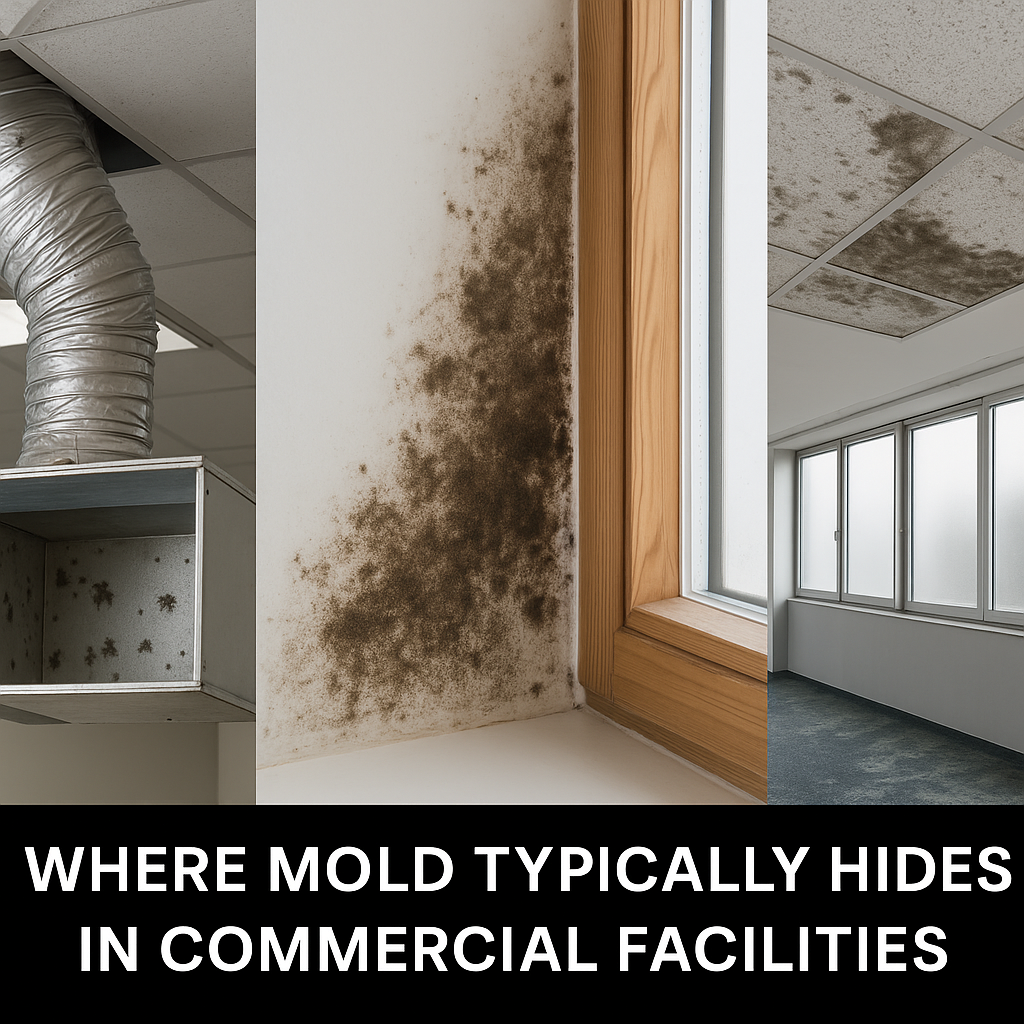
Understanding Water Damage
Water damage can strike unexpectedly, whether from burst pipes, storm flooding, or malfunctioning appliances. When water enters a property, it can quickly lead to standing water, which poses immediate risks such as electrical hazards, structural damage, and contamination of building materials. Acting quickly is crucial to prevent further damage and reduce the risk of mold growth. The restoration process begins with a thorough inspection and assessment to determine the extent of the damage. Specialists then remove standing water, dry affected areas, and address any safety concerns, such as electrical hazards or contamination from fire-related incidents. Proper handling and drying of materials are essential to ensure the property is restored safely and effectively. By taking swift action and following the right steps, property owners can minimize the impact of water damage and protect their investment.
Health Risks Associated with Mold
Exposure to mold can lead to a range of health problems, from mild allergic reactions to serious respiratory issues and infections. Individuals with asthma, compromised immune systems, or other health conditions are particularly vulnerable to the effects of mold growth. To reduce the risk of health complications, it is important to use proper cleaning methods, wear protective gear, and ensure adequate ventilation during the restoration process. Removing contaminated materials and reducing moisture are key steps in preventing further mold growth and exposure to harmful bacteria and microorganisms that may be present in water-damaged properties. Handling the cleanup safely and effectively not only protects the health of occupants but also helps restore the property to a safe, habitable condition.
The Restoration Process
The restoration process after mold or water damage involves several critical steps to ensure the property is returned to its pre-loss condition. It begins with a detailed inspection and assessment to identify all affected areas and determine the best course of action. Specialists then proceed with water removal, thorough drying, and, if necessary, demolition of irreparably damaged materials. Repairs and rebuilding follow, guided by industry protocols and safety guidelines to ensure the work is completed safely and effectively. Throughout the process, the goal is to reduce the risk of further damage, protect the health of occupants, and restore the property to its original state. Working with an experienced restoration team ensures that every step is handled with expertise, minimizing disruption and helping property owners return to normal as quickly as possible.
